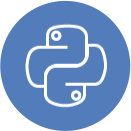Our Alumni Work At

"AI to contribute $16.1 trillion to the global economy by 2030. With 133 million more engaging, less repetitive jobs AI to change the workforce." - (Source). Data Science with Artificial Intelligence (AI) is a revolution in the business industry.. AI is potentially being adopted in automating many jobs leading to higher productivity, less cost, and extensible solutions. It is reported by PWC in a publication that about 50% of human jobs will be taken away by the AI in the next 5 years.
There is already a huge demand for AI specialists and this demand will be exponentially growing in the future. In the past few years, careers in AI have boosted concerning the demands of industries that are digitally transformed. The report of 2018 states that the requirements for AI skills have drastically doubled in the last three years, with job openings in the domain up to 119%.
FAQs for Data Science Courses in Delhi
The Data Science course teaches techniques in data analysis on how to use and the operation of using statistical modeling, machine learning and programming to derive insights from data.
People who are very interested in data analysis and statistics, programming, pursuing careers in analytics should consider doing the course.
A brief knowledge of mathematics, statistics and programming like Python or R is necessary.
Courses may last from some weeks to months, depending upon the depth of the curriculum and the Institution offering it.
You'll learn data analysis statistical modeling, machine learning data visualization and programming skills.
Yes, many institutions offer online Data Science courses as even the option for distance learning is available.
The costs are different. They range from thousands to several lakh rupees, depending on the course's duration and the institution.
There are numerous institutions in Delhi which offer information science courses counting the IITs and so on.
Yes. Students can avail of our scholarship scheme titled " Jumpstart". 90% scholarship will be bestowed on deserving students.
The topics included in this course are
- Introduction to Python and R programming
- Exploratory Data Analysis
- Inferential Statistics
- Probability Distribution
- Data Visualization<
- Hypothesis Testing
- Data Mining Supervised Learning
- Predictive Modelling
- Regression Analysis
- Data Mining Unsupervised Learning
- Clustering
- Dimension reduction
- Association Rules
- Machine Learning
- Text Mining
- Natural Language Processing
- Neural Networks
- Deep Learning
- Black Box Techniques - SVM
- Forecasting/ Time Series
You will apprehend Python, R and R Studio in this course.
The course material can be downloaded from our online Learning Management System AISPRY.
Yes. We provide online tutorials in the course material. These can be accessed from our Learning Management System AISPRY.
If you miss a class, we will arrange for a recording of the session. You can then access it through the online Learning Management System.
Each classroom session is recorded on video and stored in our Learning Management System AISPRY. You will be assigned a dedicated login to AISPRY. You can access the video sessions from AISPRY.
After you have completed the classroom sessions, you will receive assignments through the online Learning Management System that you can access at your convenience. You will need to complete the assignments in order to obtain your certificate.
After the student receives the course completion certificate, he has to enroll for an internship with AiSPRY. He will be assigned a live project that he has to complete in a month's time.
We assign mentors to each student in this program. Additionally, during the mentorship session, if the mentor feels that you require additional assistance, you may be referred to another mentor or trainer.
We provide end to end data science job assistance after the internship is over. We help in resume preparation and conduct mock interviews. We also float your resume to several reliable placement consultants with whom we have a long association.
This Certificate is valid lifelong. 360DigiTMG has a pay once repeat many times offer on this course. You pay once for the course and can repeat it many times in the future for free. This helps you adapt to technological changes and software updates in the course of your career.

Jobs In The Field Of Data Science Of Delhi
Since Delhi is considered as a metropolitan city, it is much adorned with a growing IT sector which constantly raises the need for Data scientists and data analysts. The major playing sectors are namely pharmaceutical, retail, media, E-commerce, and energy. Hence there are ample job opportunities in the field of data science in Delhi, the capital city.

Salaries In Delhi For Data Scientists
In a vast city like Delhi, the entry level salary for a data scientist starts from around 8 lakhs and ranges up to 12 lakhs. But experienced professionals and people possessing specialization in Analytics can negotiate for higher salaries.

Data Science Projects In Delhi
Delhi, being a major IT hub, has offered a lot of data science projects in the sectors of water, transport, agriculture, electricity and so on. Which is further initiated by the government of India. These require extensive data research which helps create job opportunities for data scientists.

Role Of Open-source Tool In Analytics
Open-source tools such as Python and R are easy to grasp and require low maintenance, thus helping to stretch the application into the aspects of machine learning.

Modes Of Training For Data Science With Python
The courses provided by the data science courses in Delhi are specialized and according to the needs and requirements of the industry currently, which helps professionals to get good opportunities.

Industry Applications Of Data Science
Data science is used extensively for fraud detection and risk management, analysis and interpretation of a vast amount of data and deriving interpretations for forecasting and predicting future trends.
Talk to your program advisors today!
Get your profile reviewed

